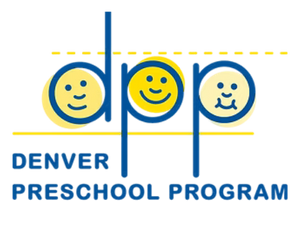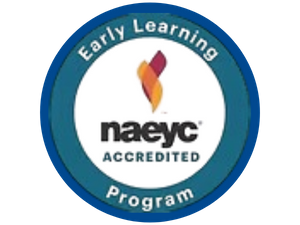Infant Care in Lakewood, Co


Your Baby’s Brain
Infant brain development is a complex and rapid process that begins even before birth. At birth, infants have billions of neurons already present in their brains, and during the first few years of life, these neurons undergo significant growth and connectivity through processes like neurogenesis and synaptogenesis. These processes involve the formation of new neurons and the connections (synapses) between them, which are crucial for learning, memory, and overall brain function.
Key factors influencing infant brain development include both genetic predispositions and environmental influences, including daycare. Genetics determine the basic structure and potential of the brain, while the environment—comprising interactions with caregivers at daycare and home, exposure to stimuli, nutrition, and overall quality of care—plays a critical role in shaping how the brain develops and functions. For instance, positive interactions with caregivers in childcare stimulate neural pathways related to social and emotional development, while exposure to language and varied stimuli supports cognitive growth.
Milestones in infant brain development include...

the progression of motor skills, from reflexive movements at birth to purposeful actions like grasping, crawling, and eventually walking. Language development also illustrates the maturation of specific brain regions involved in understanding and producing speech. These milestones reflect the ongoing refinement and specialization of neural circuits that underpin various aspects of cognitive and physical abilities.
Understanding the factors that contribute to healthy brain development is crucial, as certain conditions or environments can pose risks. Prenatal exposure to toxins, inadequate nutrition, or stressful environments can adversely affect brain growth and neural connectivity. Early identification of developmental delays and appropriate interventions can mitigate potential challenges and support optimal brain development in infants. Ultimately, nurturing a supportive environment that encourages exploration, interaction, and learning is essential for fostering healthy brain development in early childhood. Choosing a high-quality childcare with teachers who understand these factors is important for infant care and continuing through preschool.

Your Baby’s Speech
Language development in infants is a remarkable process that unfolds rapidly during the first few years of life. Even before infants begin to speak, they demonstrate an impressive ability to understand and communicate through gestures, sounds, and eventually words. Here are some key aspects of language development in infants:
- In the first few months, infants communicate primarily through crying, cooing, and facial expressions. These early vocalizations are essential for establishing communication patterns with caregivers at daycare and at home and expressing basic needs and emotions.
- Around 4-6 months of age, infants start babbling, producing repetitive consonant-vowel combinations like "ba-ba" or "da-da." Babbling is a crucial stage that allows infants to practice vocalizations and explore the range of sounds in their language.
- By around 6-12 months, infants begin to understand simple words and commands. They can recognize familiar names, objects, and gestures, demonstrating an understanding of language even before they can speak themselves.
- Typically, infants say their first recognizable words between 10-15 months of age. These early words often refer to familiar people (e.g., "mama," "dada"), objects (e.g., "ball," "dog"), or actions (e.g., "bye-bye," "eat"). The acquisition of first words marks a significant milestone in language development.
After their first words, infants rapidly expand their vocabulary. They start to learn new words at a remarkable pace, aided by exposure to spoken language and interactions with caregivers and peers in childcare. By age 2, most children have a vocabulary of several hundred words or more.
Language development is strongly influenced by social interactions and cultural contexts. Caregivers play a crucial role in language acquisition by talking, reading, and singing to infants. The language environment in which infants are raised—whether they are exposed to one language or multiple languages—shapes their linguistic abilities and proficiency.
While there are general patterns of language development, there can be considerable variation among infants. Factors such as temperament, exposure to language, and developmental pace influence how quickly infants acquire language skills.
Understanding the stages and factors influencing language development in infants is essential for supporting their communicative abilities and fostering language-rich environments that promote cognitive and social-emotional growth.

Your Baby’s Social Life
Infant social development is a process through which babies learn to interact with others, form attachments, and understand social cues. Here are the key aspects of infant social development:
From birth, infants engage in social interactions through eye contact, facial expressions, and vocalizations. These early interactions are crucial for building emotional connections with caregivers at daycare and at home and establishing the foundation for social development. Attachment refers to the deep and enduring emotional bond that infants develop with their primary caregivers, typically starting within the first year of life. Secure attachment is characterized by infants feeling safe, comforted, and protected by their caregivers, which promotes healthy social and emotional development.
Around 6-8 weeks of age, infants begin to smile responsively to caregivers and familiar faces. This social smiling indicates their growing ability to recognize and engage with others socially. A daycare with reliable, consistent teachers like Advantage Learning Center is important. By 3-6 months, infants start engaging in turn-taking interactions, such as cooing and babbling back and forth with caregivers in childcare centers and at home. This reciprocal interaction lays the groundwork for more complex social skills and eventually leads to social play, such as peek-a-boo and other interactive games.
During the first year, infants begin to recognize and respond to basic emotions, both in themselves and others. They may show empathy by responding to another person's distress or joy, demonstrating an emerging understanding of emotional cues.
Around 6-12 months, infants may exhibit stranger anxiety, becoming wary or fearful of unfamiliar people. This reflects their growing awareness of social norms and familiar versus unfamiliar faces. Social anxiety, or discomfort in new social situations, can also emerge during this period.
Around 9-12 months, infants develop joint attention skills, where they can focus on an object or event alongside another person. Joint attention is critical for language development, as it involves sharing attention and interpreting social cues within a communicative context.
Infant social development is influenced by cultural practices and family dynamics. Cultural values and social norms shape how caregivers interact with infants, influencing their socialization experiences and understanding of social roles.
Like other aspects of development, there is variability in infant social development. Factors such as temperament, early experiences, and the quality of caregiving can impact how quickly infants develop social skills and form relationships with others.
Understanding and supporting infant social development involves providing nurturing relationships, responsive caregiving, and opportunities for social interaction and exploration. These experiences contribute to the foundation of social competence and emotional well-being throughout childhood and beyond.
Your Baby’s Body
Physical development in infants refers to the growth and maturation of their bodies and motor skills during the first year of life and beyond. Here are the key aspects of physical development in infants:
Infants experience rapid growth during the first year, typically doubling their birth weight by around 5-6 months and tripling it by their first birthday. Growth is influenced by genetics, nutrition, and overall health.

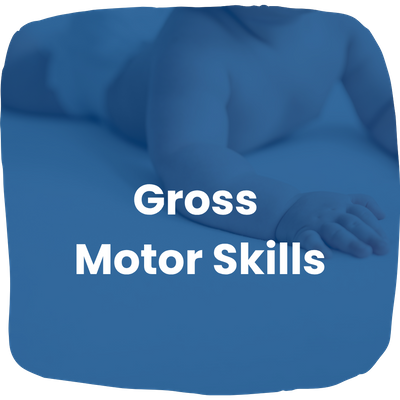
Head Control - Infants begin to gain head control shortly after birth and can typically hold their head steady by around 4-6 months.
Rolling Over - Around 4-6 months, infants start rolling from their back to their stomach and vice versa.
Sitting - By 6-8 months, many infants can sit without support, though initially with some instability.
Crawling and Standing - Between 6-12 months, infants may begin to crawl, pull themselves up to stand, and eventually start cruising (walking while holding onto furniture).
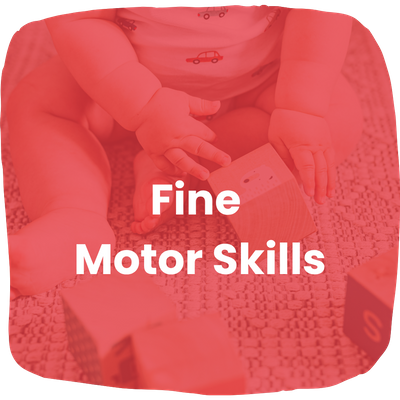
Grasping - Infants develop the ability to grasp objects with their hands, progressing from reflexive grasping to purposeful grasping and manipulation.
Pincer Grasp - Around 9-12 months, infants start using their thumb and forefinger to pick up small objects (pincer grasp).
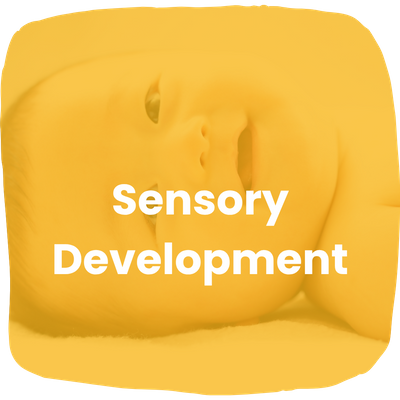
Vision - Newborns have limited vision but quickly develop the ability to focus on objects and track movements. By 6-12 months, infants have near adult-like vision.
Hearing - Infants are born with well-developed hearing and can distinguish different sounds and voices shortly after birth. They become increasingly responsive to language and environmental sounds.
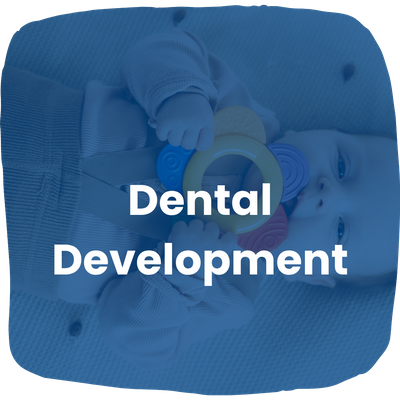
Most infants begin teething around 6 months, with their first teeth (usually the bottom front teeth) emerging through the gums.

Infants are born with several reflexes that aid in survival and early development, such as the rooting reflex (turning towards touch on the cheek) and the grasp reflex (curling fingers around objects).
Proper nutrition, including breastfeeding or formula feeding, is essential for supporting overall physical growth and development in infants. Adequate intake of nutrients like calcium, iron, and vitamins is crucial for healthy bone development, muscle growth, and overall well-being.
Regular pediatric check-ups monitor physical growth milestones and ensure that infants are developing appropriately. Healthcare providers track weight gain, height, head circumference, and motor skills progression to identify any concerns early on.
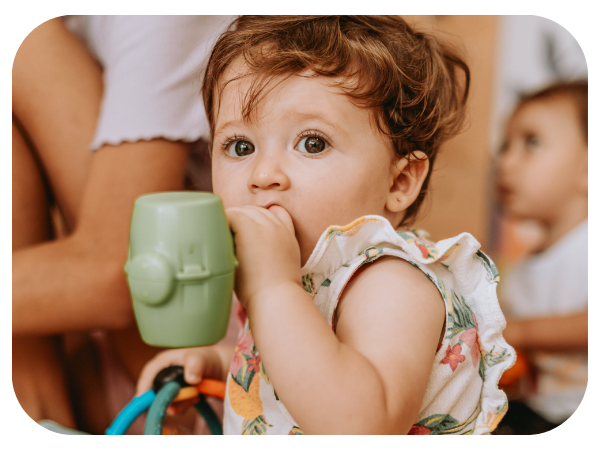
Ages and Stages Questionnaire (ASQ)
The Ages and Stages Questionnaire (ASQ) complements these check-ups by offering a comprehensive developmental screening tool. It identifies children at risk for developmental delays, ensuring early intervention. The ASQ assesses various developmental domains, such as communication, gross motor, fine motor, problem-solving, and personal-social skills, providing a well-rounded picture of a child's development.
Caregivers at the Advantage Learning Center complete the ASQ based on their observations. The standardized and validated nature of the ASQ ensures the reliability and meaningfulness of its results. When the ASQ indicates potential developmental concerns, it guides referrals for in-depth evaluations and early intervention services, significantly improving developmental outcomes. Administering the ASQ at regular intervals allows parents and healthcare providers to track a child's development over time, identifying trends, improvements, or emerging concerns. Overall, the ASQ, in conjunction with regular pediatric check-ups, plays a vital role in early detection, comprehensive monitoring, parental education, and timely intervention, all of which support the optimal development of infants and young children.
Understanding the stages and factors influencing physical development in infants helps caregivers at daycare support healthy growth and provide appropriate opportunities for motor skill development and exploration. Each infant develops at their own pace, so providing a nurturing environment and responsive care is key to promoting optimal physical development during infancy.
Your Baby’s Day at Advantage Learning Center

An infant's day is typically filled with a mix of activities that support their physical, cognitive, and emotional development. Here’s an outline of what an infant should ideally be doing throughout the day:
- Sleeping: Infants need a lot of sleep, often around 14-17 hours a day for newborns, with sleep periods gradually consolidating as they grow. Proper sleep is crucial for their growth and development.
- Feeding: Infants need regular feedings, whether breastfed or formula-fed. Newborns often eat every 2-3 hours, gradually extending the intervals as they grow. Feeding not only provides nutrition but also offers opportunities for bonding.
- Diaper Changes and Hygiene: Regular diaper changes are necessary to keep the baby clean and prevent diaper rash. This also includes daily routines like handwashing and general hygiene.
- Tummy Time: Supervised tummy time while the infant is awake helps strengthen their neck, shoulder, and arm muscles, and promotes motor development. Infants have several short sessions throughout the day.
Playtime and Stimulation: Engaging an infant with age-appropriate toys, visual and auditory stimuli, and gentle interactions is essential for their cognitive and sensory development. Activities can include:
- Soft rattles, mobiles, and mirrors.
- Gentle talking and singing.
- Reading simple picture books.
- Safe exploration of textures and objects.
Social Interaction: Social interactions with caregivers and other infants are vital for an infant’s emotional development. This includes:
- Eye contact and smiling.
- Talking and cooing.
- Responding to their needs and cues.
- Outdoor Time and Fresh Air: Taking an infant outside for a walk or spending time in a safe outdoor environment can be beneficial. It exposes them to different sights, sounds, and fresh air, which can be stimulating and soothing.
- Routine and Consistency: Establishing a routine helps provide a sense of security and predictability for the infant. Regular patterns of sleep, feeding, and play contribute to their overall well-being.
- Bonding and Cuddling: Physical closeness, cuddling, and affection are crucial for emotional bonding and security. It helps the infant feel safe and loved.
-
- Balancing these activities throughout the day helps support the infant’s overall growth and development. Each infant is unique, so it’s essential to be attentive to their cues and adjust activities accordingly to meet their individual needs.
Your Baby’s Team at Advantage Learning Center
Communication between parents and childcare caregivers is crucial for the child's well-being, development, and overall care experience. Effective communication ensures consistency and continuity of care by keeping both parents and caregivers aligned on routines, feeding schedules, nap times, and behavior management, providing a stable environment essential for the child's sense of security. Regular updates help caregivers at daycare understand the child's unique needs, preferences, and any specific concerns parents might have, allowing for a tailored care approach. By sharing observations, both parties can track developmental progress and address any potential delays or concerns early on, leading to timely interventions and support.
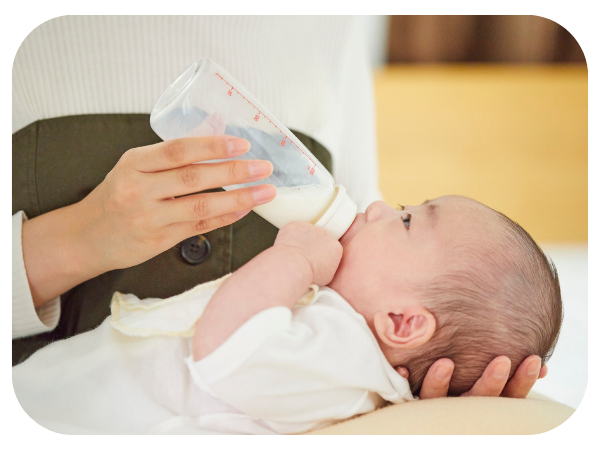
Open communication also facilitates prompt discussions about any behavioral changes or health issues, enabling quick and appropriate responses. Transparent and honest communication fosters trust between parents and caregivers, making parents informed and involved. For new parents, regular communication with caregivers provides reassurance and emotional support, reducing parental anxiety and stress.
Moreover, open lines of communication help resolve misunderstandings or conflicts that may arise, maintaining a positive relationship between parents and caregivers. Parents' feedback allows caregivers to make necessary adjustments and improvements, ensuring the highest quality of care. Overall, effective communication creates a collaborative and supportive environment where the child's best interests are prioritized, reinforcing the idea that both parents and caregivers are working together as a team to support the child's growth and development.
What Our Lakewood Families Are Saying


My baby girl is in the infant room, and she LOVES her teachers. She is so happy to go in every day. They serve good food, and they taught her to wave and blow kisses. I love it when they do arts and crafts and send me pictures. Overall, I'm very happy with how things are going!"
- Hayley

Love this place. Have had my kids here for 6 months. I know they are safe, happy, and learning a ton. Staff and leadership are very approachable and collaborative. Teachers really care for the kids, and I am amazed by their patience and kindness. My older daughter is pre-k and she has learned so much. I highly recommend ALC."
- Shahed

This has been a great place for our kids. One of the best businesses that I have ever dealt with. The teaching staff is dedicated to my child's learning, and the admin people do a great job."
- Skip

